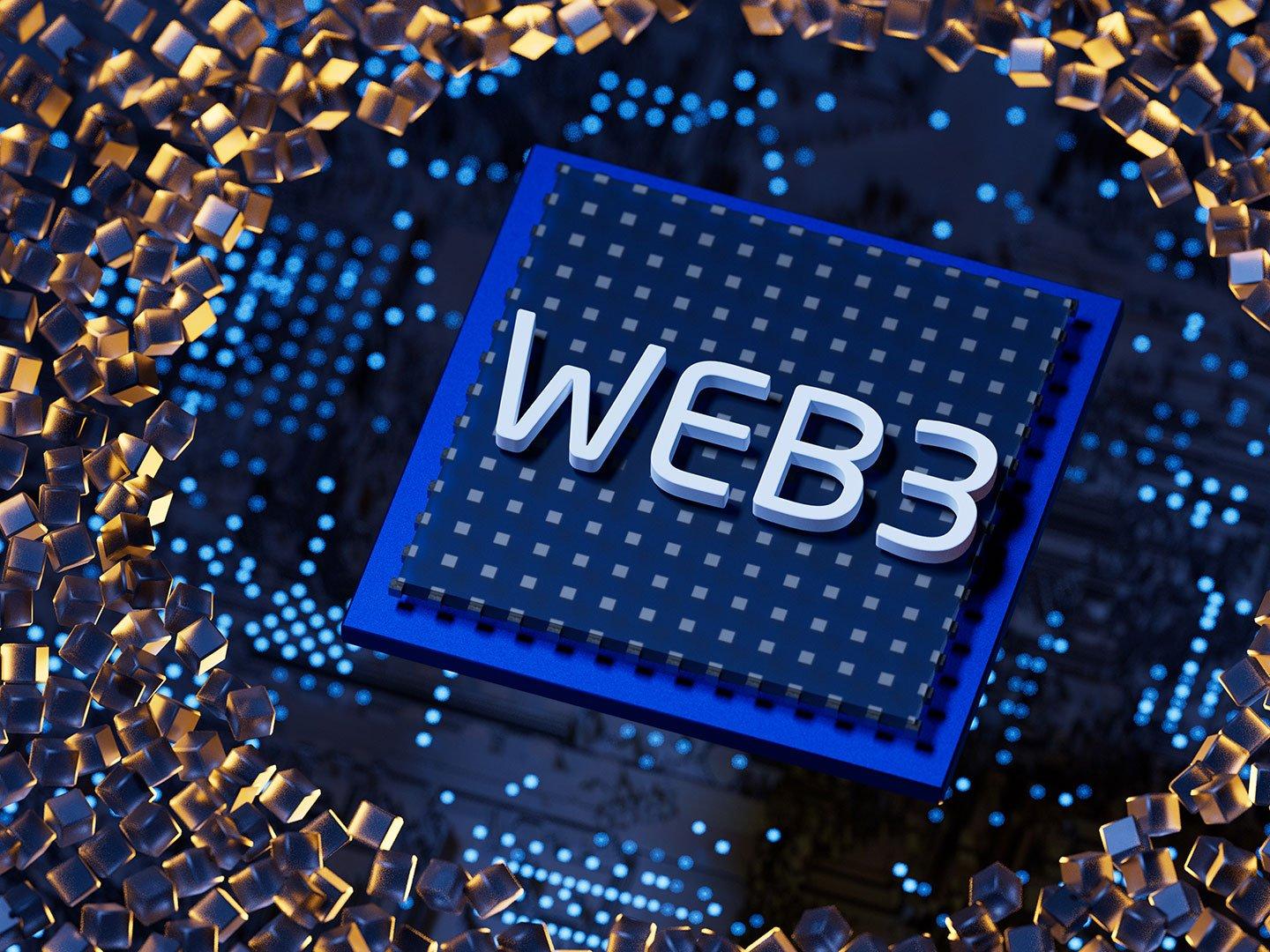Embracing the Future of the Internet: A Comprehensive Guide to Web 3.0
What is Web 3.0?
Web 3.0, often referred to as the Semantic Web or the Decentralized Web, is a new generation of the internet that aims to provide a more intelligent, connected, and decentralized online experience. This innovative technology focuses on enhancing the user experience by integrating artificial intelligence, machine learning, and blockchain technology into web applications, thereby offering a more personalized, secure, and efficient online environment.
Evolution from Web 1.0 to Web 3.0
Since its inception, the internet has undergone a significant transformation. Web 1.0, the first generation of the internet, was characterized by static web pages and limited user interaction. The emergence of Web 2.0 revolutionized the way users interacted with websites, allowing for dynamic content and social networking. Today, Web 3.0 is driving the next phase of the internet’s evolution, focusing on decentralization, semantic data, and intelligent systems.
Importance of Web 3.0 in today’s digital landscape
As our reliance on the internet continues to grow, Web 3.0 plays a crucial role in addressing the limitations and challenges of the current web infrastructure. By leveraging decentralization, enhanced data management, and smart technologies, Web 3.0 holds the potential to reshape industries, drive innovation, and empower users with greater control and ownership over their digital identities and assets.
Key Concepts of Web 3.0
Decentralization
- Blockchain technology At the core of Web 3.0 is the concept of decentralization, which aims to eliminate the need for central authorities and intermediaries. Blockchain technology, a distributed ledger system, enables this decentralization by providing a secure, transparent, and tamper-proof platform for peer-to-peer transactions and data storage.
- Peer-to-peer networks Peer-to-peer (P2P) networks facilitate direct connections between users, eliminating the need for centralized servers. This approach enhances privacy, security, and efficiency, as data is distributed across multiple nodes, reducing the risk of a single point of failure.
Semantic Web
- Data interoperability Web 3.0 aims to improve data interoperability by enabling machines to understand and process information more efficiently. This is achieved through the use of standardized data formats, ontologies, and metadata, which provide a common framework for exchanging and interpreting data across various platforms and applications.
- Ontologies and metadata Ontologies are formal representations of concepts and relationships within a specific domain, enabling machines to understand the meaning and context of data. Metadata, on the other hand, is descriptive information about a piece of data that helps machines identify, categorize, and process it efficiently. Together, ontologies and metadata form the foundation of the Semantic Web, enabling more intelligent and meaningful data interactions across the internet.
Artificial Intelligence and Machine Learning
- Personalized user experiences Web 3.0 leverages artificial intelligence (AI) and machine learning (ML) technologies to offer personalized user experiences. By analyzing user behavior, preferences, and interests, AI-powered systems can tailor content and services to meet individual needs, creating a more engaging and relevant online environment.
- Predictive analytics With the ability to process vast amounts of data, AI and ML technologies can generate valuable insights and predictions. This enables businesses and organizations to make data-driven decisions, optimize processes, and enhance user experiences by anticipating their needs and preferences.
Components of Web 3.0
Decentralized Applications (dApps)
- Definition and purpose Decentralized applications (dApps) are software applications that run on distributed ledger technology, such as blockchain. Unlike traditional applications, dApps are not controlled by a single authority, making them more secure, transparent, and resistant to censorship. By leveraging smart contracts, dApps can automate processes and facilitate peer-to-peer transactions without the need for intermediaries.
- Examples of popular dApps Some popular dApps include decentralized finance (DeFi) platforms, non-fungible token (NFT) marketplaces, and decentralized social networks, all of which exemplify the potential of Web 3.0 to transform industries and empower users with greater control over their digital lives.
Smart Contracts
- What are smart contracts? Smart contracts are self-executing contracts with the terms of the agreement directly written into code. They are stored and executed on a blockchain, ensuring that the contract’s conditions are transparent, secure, and tamper-proof. Once the specified conditions are met, the smart contract automatically executes the agreed-upon actions, eliminating the need for intermediaries and reducing the risk of human error or fraud.
- Use cases and applications Smart contracts have a wide range of applications, from automating financial transactions and streamlining supply chain processes to enabling decentralized governance systems and managing digital assets. Their versatility and security make them an essential component of Web 3.0 infrastructure.
Tokenization and Digital Assets
- Non-fungible tokens (NFTs) Non-fungible tokens (NFTs) are unique digital assets that represent ownership of a specific item, such as artwork, collectibles, or virtual goods. NFTs are stored on a blockchain, ensuring their provenance, authenticity, and scarcity. This technology enables creators to monetize their work and users to trade and invest in digital assets securely and transparently.
- Digital currencies and cryptocurrencies Digital currencies, including cryptocurrencies like Bitcoin and Ethereum, are another crucial component of Web 3.0. These decentralized, peer-to-peer currencies provide an alternative to traditional financial systems, offering greater privacy, security, and financial inclusion.
Decentralized Identity Management
- Self-sovereign identity (SSI) Web 3.0 introduces the concept of self-sovereign identity (SSI), which allows individuals to own, control, and manage their digital identities without relying on a centralized authority. With SSI, users can securely store and share their personal data, granting access only to the parties they choose, thus enhancing privacy and reducing the risk of data breaches.
- Benefits of decentralized identity Decentralized identity management offers several benefits, including increased privacy, security, and user control. It also enables more efficient data sharing and verification processes, reducing the need for manual checks and redundant data storage.
The Role of Web 3.0 in Various Industries
Finance
- Decentralized finance (DeFi) Decentralized finance (DeFi) is a major application of Web 3.0 that aims to revolutionize traditional financial systems by offering decentralized, transparent, and accessible financial services. DeFi platforms leverage blockchain technology and smart contracts to enable activities such as lending, borrowing, trading, and investing, without the need for intermediaries like banks or financial institutions.
- Banking and lending Web 3.0 technologies have the potential to transform the banking and lending industries by enabling more secure, efficient, and transparent processes. Through the use of smart contracts, tokenization, and decentralized identity, Web 3.0 can streamline financial transactions, reduce fraud, and improve risk assessment and management.
Supply Chain Management
- Improved traceability and transparency Web 3.0 technologies can significantly enhance supply chain management by providing improved traceability and transparency. Blockchain-based platforms can securely store and share data on product origins, movements, and transactions, enabling real-time monitoring and verification of supply chain activities.
- Smart contract-based agreements By leveraging smart contracts, Web 3.0 can automate and streamline supply chain agreements, reducing the need for manual intervention, improving efficiency, and minimizing the risk of disputes and delays.
Healthcare
- Patient data management Web 3.0 technologies can revolutionize patient data management by enabling secure, decentralized storage and sharing of medical records. This can facilitate better data interoperability, improve patient privacy, and enable more efficient and personalized care.
- Research collaboration Web 3.0 can also enhance research collaboration in the healthcare industry by providing a secure, transparent, and interoperable platform for data sharing and analysis. This can help accelerate the development of new treatments and medical advancements.
Education
- Digital credentials Web 3.0 technologies, such as blockchain and decentralized identity, can streamline the issuance, verification, and management of digital credentials, such as diplomas and certificates. This can reduce fraud, improve efficiency, and enhance trust in the education system.
- Personalized learning experiences By leveraging AI and ML technologies, Web 3.0 can enable more personalized learning experiences for students, tailoring educational content and delivery methods to individual needs and preferences.
Challenges and Potential Risks of Web 3.0
Scalability
One of the main challenges facing Web 3.0 is scalability. As the number of users, transactions, and applications on decentralized networks grows, there is a need for efficient and sustainable solutions to handle this increased demand without compromising performance or security.
Security and Privacy Concerns
While Web 3.0 offers enhanced security and privacy compared to its predecessors, it also introduces new potential risks and vulnerabilities. Ensuring the security of decentralized networks, protecting user privacy, and addressing emerging threats will be crucial for the widespread adoption of Web 3.0 technologies.
Legal and Regulatory Issues
Web 3.0 presents several legal and regulatory challenges, as existing frameworks may not adequately address the unique aspects of decentralized systems, digital assets, and smart contracts. Developing and implementing appropriate regulations and standards will be essential to ensure the responsible growth and development of Web 3.0 technologies.
Digital Divide and Accessibility
As Web 3.0 introduces advanced technologies and applications, there is a risk of exacerbating the digital divide between those with access to these innovations and those without. Ensuring that Web 3.0 is accessible, inclusive, and affordable for all users will be an important consideration for its successful implementation.
Conclusion
The promise of Web 3.0
Web 3.0 holds the potential to revolutionize the internet as we know it, offering a more intelligent, connected, and decentralized online experience. By addressing the limitations of the current web infrastructure and empowering users with greater control and ownership over their digital lives, Web 3.0 has the potential to transform industries, drive innovation, and reshape the digital landscape.
Preparing for the Web 3.0 revolution
As businesses, organizations, and individuals prepare for the Web 3.0 revolution, it is crucial to understand the key concepts, technologies, and applications that define this new era of the internet. Embracing Web 3.0 technologies and adapting to the evolving digital landscape will be essential for future success and growth.
If you’re looking to develop blockchain-based solutions or integrate Web 3.0 technologies into your business, consider hiring professional blockchain developers from New York Software Developers. With their expertise and experience, they can help you navigate the complex world of Web 3.0 and build innovative solutions tailored to your needs. Don’t miss the opportunity to be at the forefront of the Web 3.0 revolution – contact New York Software Developers today!




